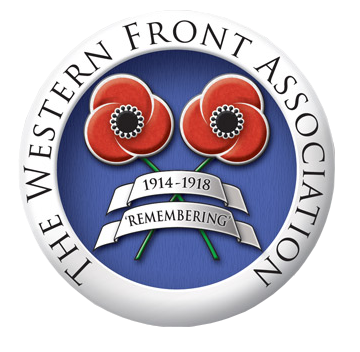Five sons lost in the war: a Nottingham family’s loss
- Home
- World War I Articles
- Five sons lost in the war: a Nottingham family’s loss
An earlier article, written for the Western Front Association website, lists the handful of the extremely unfortunate families known to have lost five sons in the Great War, to which the Richardson family must now be added.
Excellent information regarding the family and military history of all five of the Richardson brothers was found on the website rollofhonour.nottinghamshire.gov.uk and proved invaluable in writing this article. Although the individual soldiers had all been linked to each other and to their parents, it was perhaps the absence of the word ‘five’ in the individual accounts that had helped to keep them ‘undiscovered’ outside of Nottingham.
The following pension ledger card was identified in Project Ledger as of significant interest, evidently relating to claims on behalf of the loss of no less than five sons of Ellen Richardson, of 11 Westminster Villas, Westminster Street, Nottingham. Although all five could be readily found on the CWGC website, there were no entries for next of kin.

The Richardson Family
It is worth mentioning that Richardson is a very common name in Nottingham, and there was more than one casualty from this city for each of the five names on the ledger.
The 1921 census revealed Ellen living at the address on the ledger, but recorded as Helen Richardson, a 69 year old widow born in Derby, Derbyshire.
The 1911 census found her as a boarder, Ellen Richardson, at 8 Lotus Terrace, Nottingham, and noted that she was a widow, who had been married for 40 years, and had produced fourteen children, two of whom were by then deceased, and with just a single daughter Flory (sic), aged 14, living at the same address.
The 1901 census found the Richardson family at 3 Lyndock Row, Nottingham, with Ellen’s husband identified as William, a 45 year old dyer from Derby. In addition to Florence, sons Henry and Ernest, seen on the pension ledger, were among the children present. Reference to the GRO births’ index showed the children had a mother’s maiden name of Brindley.
The banns for William Richardson and Ellen Brindley were read at the Parish Church of Derby St John on 7, 14 and 21 September 1873, strongly suggesting they were married there the following week.
In the 1881 census William was recorded as a dyer, with the family at 12 Busby Place, Derby, while in 1891 the family were at 4 Barnaby Terrace Nottingham, with William a silk and lace dyer, and Ellen a sateen cloth weaver.
They lost their first child, Charles William Henry, age 0, in 1874, and despite one birth being registered with mother’s maiden name Brinley, it was possible to find the birth registrations for all twelve children still alive in 1911. The first six, Ellen (1875), William (1876), Jane (1878), Alfred (1879) and Alice Elizabeth (1882), were all registered in Derby, followed by James (1883) in Belper, then Thomas Benjamin (1886), John Henry (1888), Ernest (1890), Reuben (1891) and Mary Ann (1895), all registered in Nottingham, and finally Florence (1897) in Basford. The other deceased child was Herbert George, born in Nottingham in 1898 and died aged 1 in 1900.
It would seem evident that William Richardson died in late 1901, reportedly aged 49, while Ellen’s death was registered in Nottingham in 1933 aged 76.
A brief account of each lost son is given in the order of their deaths.
William Richardson - 17 October 1914
William’s soldiers’ effects record shows his beneficiaries were mother Ellen, brothers James and Reuben, and sisters in law Emma E., and Mrs Ada Mann.
William’s service record doesn’t survive, but his medal index card and medal roll entries show he served as pte. 6359 Lincolnshire Regiment, disembarking in France on 21 September 1914, so evidently a pre-war regular soldier. His medal roll entry states that he died on 17 October 1914, as confirmed by the CWGC, which notes that he has no known grave, his name being commemorated on the Le Touret Memorial.
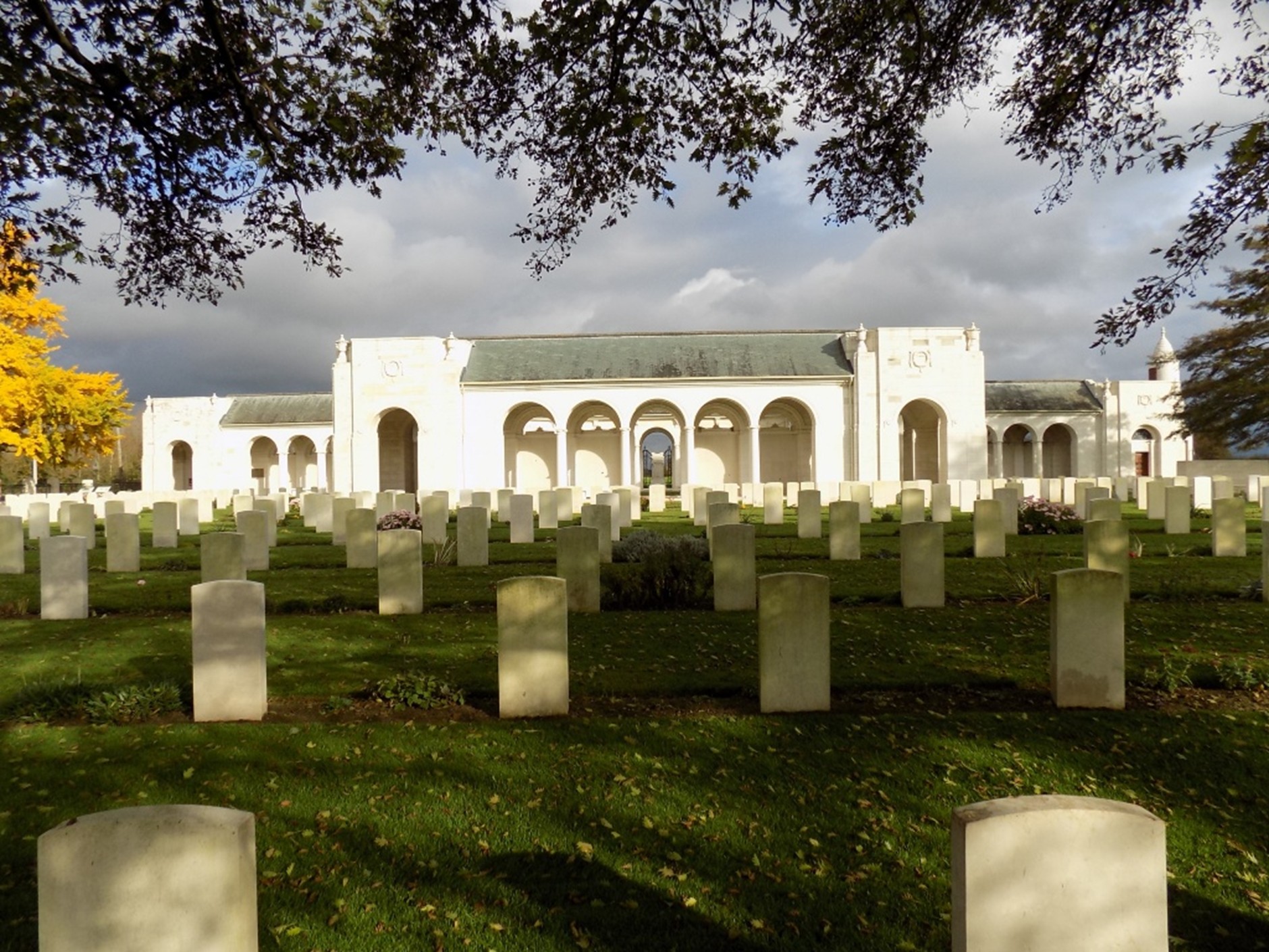
The war diary for 1 Battalion Lincolnshire Regiment records that on 17 October 1914 the battalion were ordered to seize the railway and farmhouse at the top of the strongly defended Laquieterie Ridge, and then take the village of Herlies, which involved charging the enemy under heavy fire, and taking their trenches at the point of the bayonet. A message of congratulations on the day’s action was sent from 9 Brigade Headquarters, however the casualties were ten killed, 68 wounded and 6 missing. This very same area would be contested again on March 1915 in the Battle of Aubers.
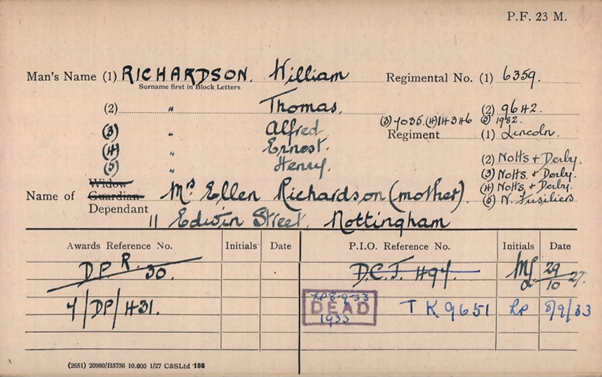
Alfred Richardson - 12 March 1915

Alfred Richardson’s medal award information shows he served as Pte. 7035, 1 Battalion Sherwood Foresters, (Nottinghamshire and Derbyshire Regiment), disembarking in France on 4 November 1914.
Alfred’s service record survived the London blitz and is to be found in series WO 363. He had been a regular soldier and served in South Africa in the Boer war, being awarded the Queen’s South Africa Medal with clasps for 1901 and 1902.
His record shows he married Emma Elizabeth Johnson at Nottingham Register Office on 11 April 1914 and their daughter, Frances Jeanette, was born 17 August 1915. This is reflected by the following pension card.
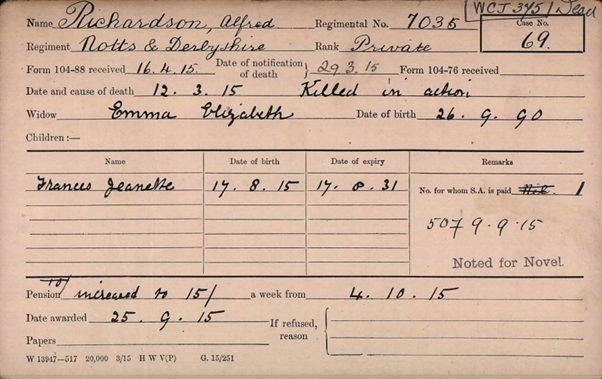
Alfred was killed in action on 12 March 1915, and sadly has no known grave, his name being commemorated on the Le Touret Memorial, as is that of his brother William.
The battalion war diary for 1 Sherwood Foresters shows it was heavily involved in the battle of Neuve Chapelle, which took place from 10 to 13 March 1915, with the British intention of breaking through the German lines and taking the Aubers Ridge. The battalion was subjected to a heavy counterattack on 11 March, and having retreated to avoid being outflanked, then managed to regain their former line by the morning of 12 March. A few casualties were then taken by British artillery fire, and by the end of the day the battalion had withdrawn to their original support trench and set up a new defensive line. The day’s casualty figures for ‘other ranks’ were high, recording 90 killed, 265 wounded and 87 missing. The battalion was withdrawn to reserve billets early the next day, and then to billets, and received a much-needed draft of 89 men.
Alfred’s soldiers’ effects record lists his beneficiaries as widow, Emma E., and child or children (if any). In fact, the birth of a second daughter, Izabella Gildroy Naomi, was registered in the last quarter of 1917, and Frances Jeanette died aged 3 at the end of 1918.
In March 1920 his widow was living at 10 Budge Row, Mount Street, Nottingham, but by the time of the 1921 census, Emma was boarding with the Rayworth family at 15 Radford Boulevard, along with her daughter Izabella. Later in the year she married Timothy Thomas Rayworth, a chauffeur and motor engineer who had served with the Army Service Corps in the war.
Thomas Richardson - 13 September 1916
Thomas Richardson’s service record has unfortunately not survived however his medal index card and medal roll entries show he served as pte. 9642, 2 Battalion Sherwood Foresters, arriving in France on 18 August 1915, and was killed in action on 13 September 1916. CWGC records that he has no known grave, being commemorated on the Thiepval Memorial.
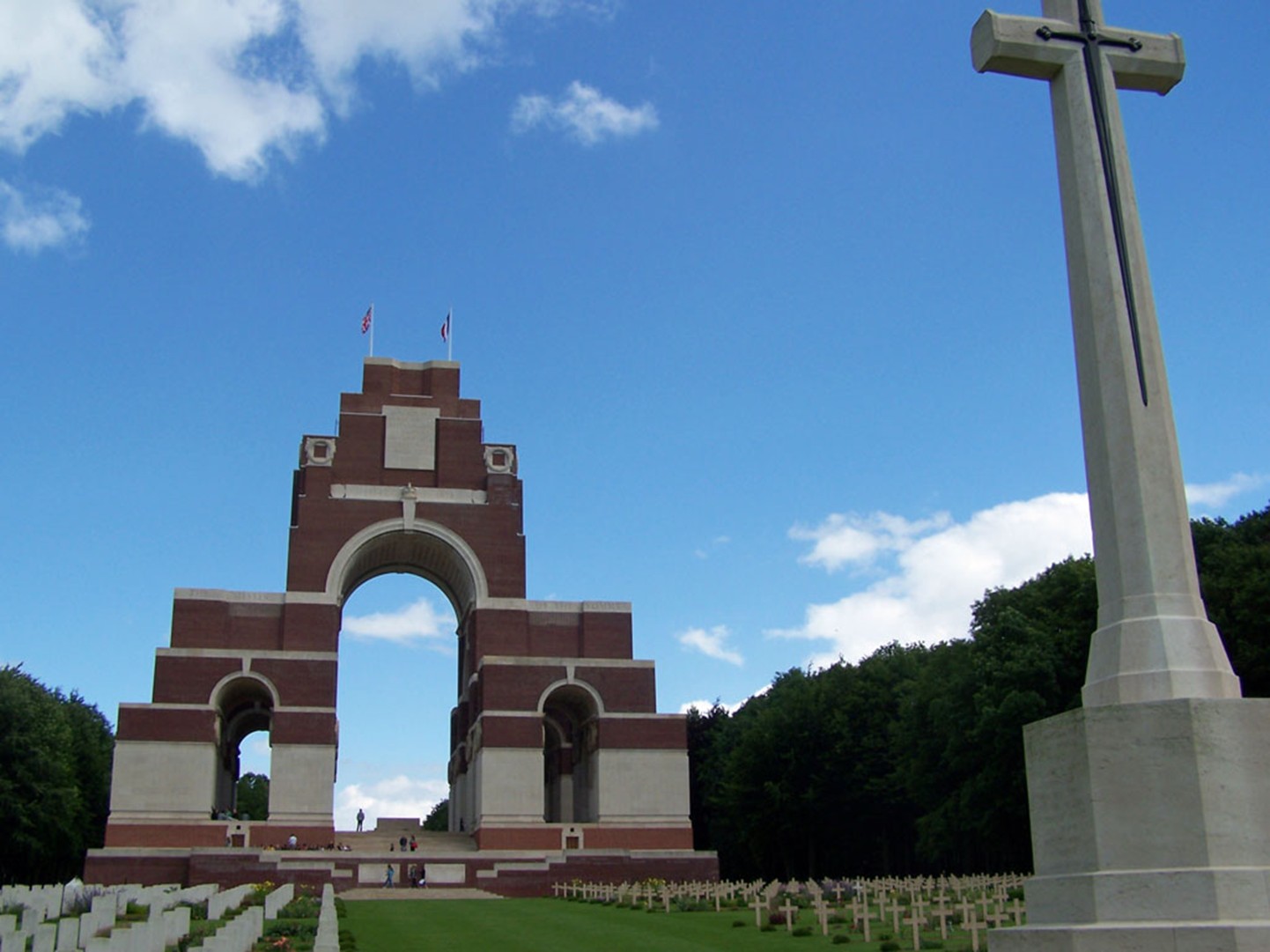
The battalion had gone into action near Guillemont in an attempt to capture the strongpoint known as The Quadrilateral, a complex of almost impregnable fortifications, some three miles behind the original front line German defences. The battalion war diary lists casualties among other ranks at over 50%.
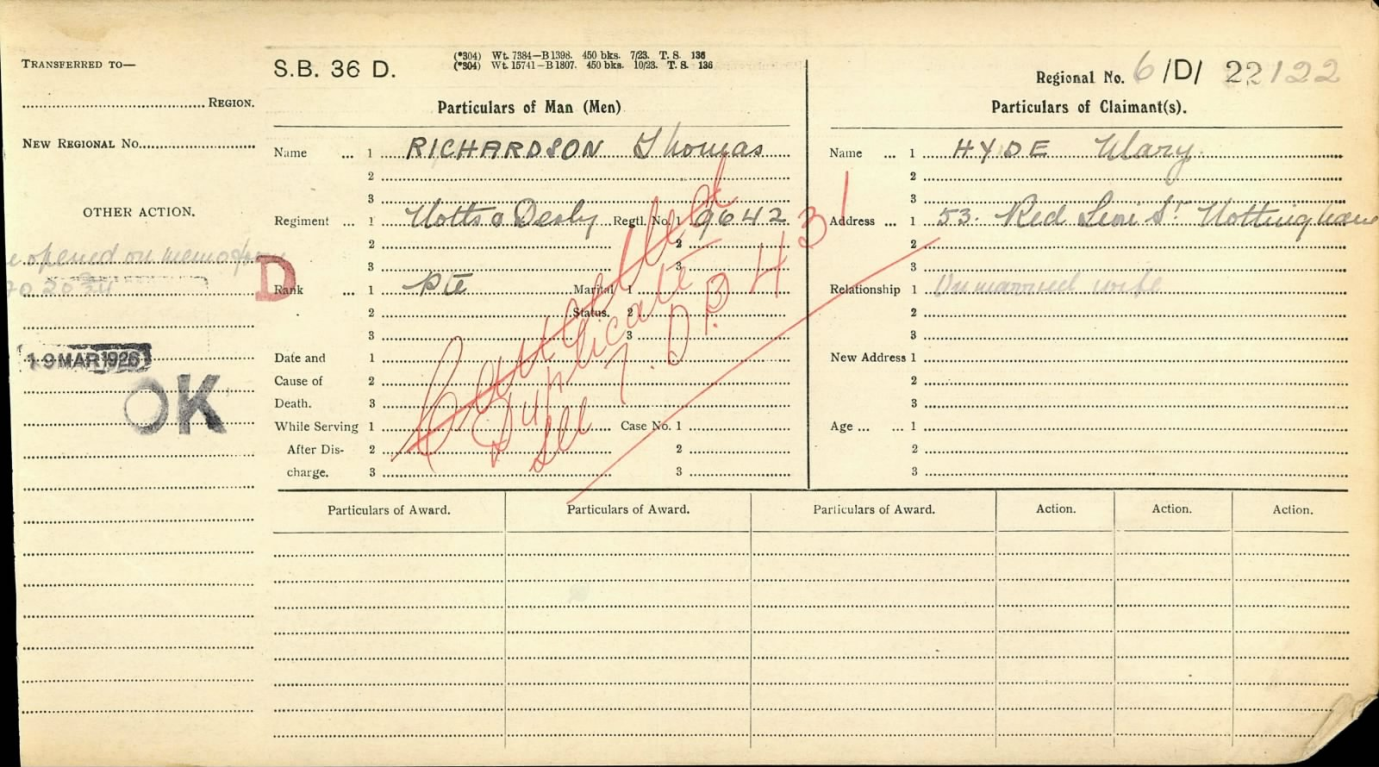
Mary Hyde had been shown as the mother of his illegitimate child on the first pension ledger entry shown at the beginning of this article, and with the more correct address of 53 Red Lion Street, amended to 38 The Rushes, Loughborough, also crossed out, and followed by 18 Tonman Street, Deansgate, Manchester. These all turned out to be multi occupancy lodgings accommodation, with Mary unable to be found at any of them in the 1921 census.
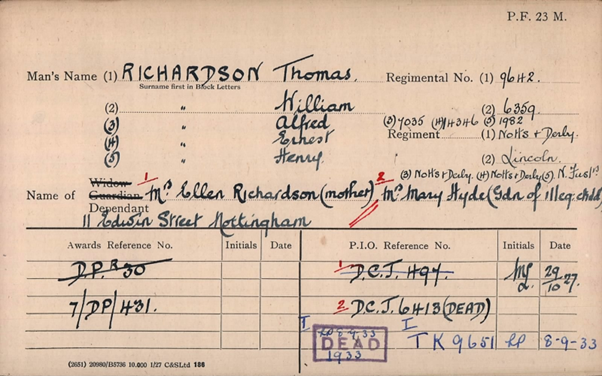
Again, Mary Hyde proved elusive and couldn’t be found in the 1921 census at the address of 11 Edwin Street, Nottingham. Mary Hyde isn’t mentioned on his soldiers’ effects entry, which is under the name Tom Richardson, and gives his mother Ellen, and sisters in law Ada Mann and Emma E. as beneficiaries. This study failed to identify his illegitimate child.
Henry Richardson - 25 September 1917
Although registered as John Henry, all civilian and army records refer to him as Henry, or occasionally as Harry.
The 1901 census records Henry as a newsboy, living with his parents, but the website rollofhonour.nottinghamshire.gov.uk notes that Henry subsequently became a regular soldier, before joining the Midland Railway as a goods porter, at Nottingham Midland station, in March 1914.
Henry’s service record does not survive but his medal index card and medal roll entries show he must have been called up from reserve as soon as war broke out, arriving in France on 13 August 1914, and serving as Pte. 14346, 1 Battalion Northumberland Fusiliers.
His pension ledger indicates that he was shot while a prisoner of war, and CWGC records his burial in Cologne South Cemetery.
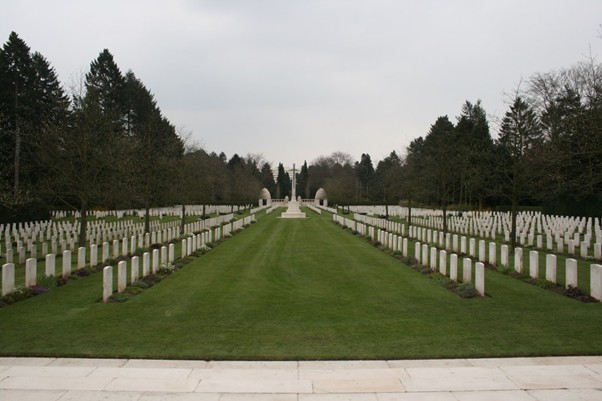
The battalion war diary for 1 Northumberland Fusiliers records that it sailed from Southampton aboard SS Norman, a Union Castle liner requisitioned by the war office, arriving at Le Havre in the early hours of 14 August 1914.
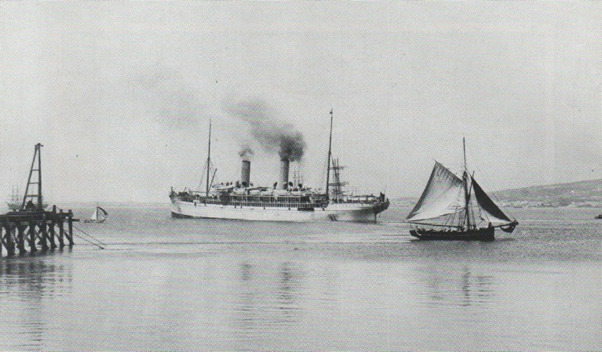
The battalion were heavily engaged at the Battle of Mons, and on the 24 August came under heavy fire, but held the enemy in check along their whole line before being ordered to retire, falling back through the town of Frameries, where they were engaged in street fighting, and then retiring further to Bermeries, after delaying the enemy to allow the transport to get clear.
The diary appendices show 8 killed and 11 wounded at Mons on 23 August, and a further 3 killed and 34 wounded at Frameries on the following day, when Henry was among those captured.
There are several entries in the Red Cross archives relating to Henry Richardson, and although there is often conflicting information, they show he was captured at Mons on 24 August 1914, served with the Northumberland Fusiliers, was born on 23 April 1888, and his next of kin was Mrs Grace Richardson, 1 Lindum Grove, Nottingham.
There are three different prison camps listed in his records, Munchen II and Munchen III, and also Minden, but it is not possible to determine how long he spent at each camp. His date of death is given as 25 September 1917, but the German record keepers seem to have conveniently avoided recording his cause of death, although noting that he was ‘nicht verwunden’, i.e. unwounded when captured.
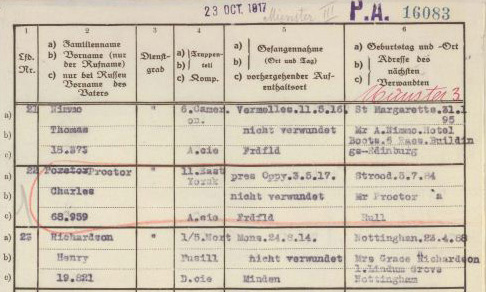
His pension ledger entry contains the information that he was ‘shot’, but there is clear evidence that he was unlawfully killed.
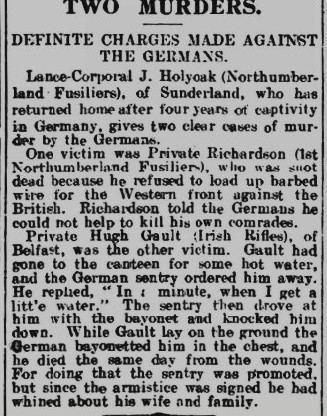
Red Cross POW records show that Lance Corporal James Holyoak was captured on the same day and at the same place as Henry Richardson and confirms his hometown of Sunderland.
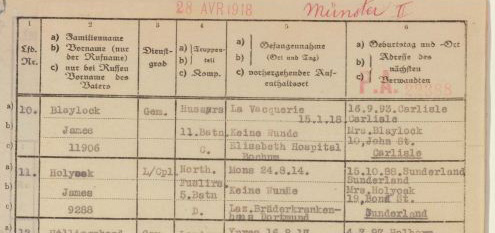
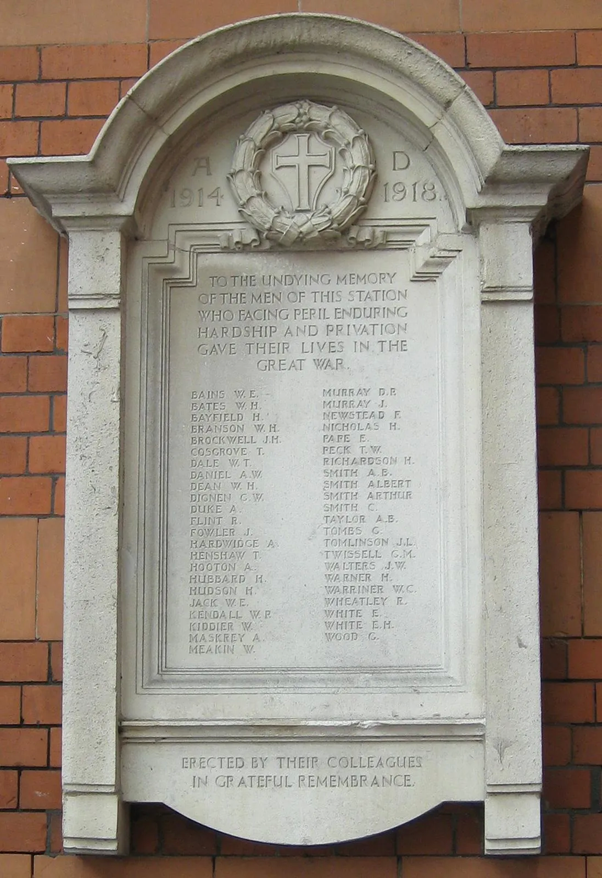
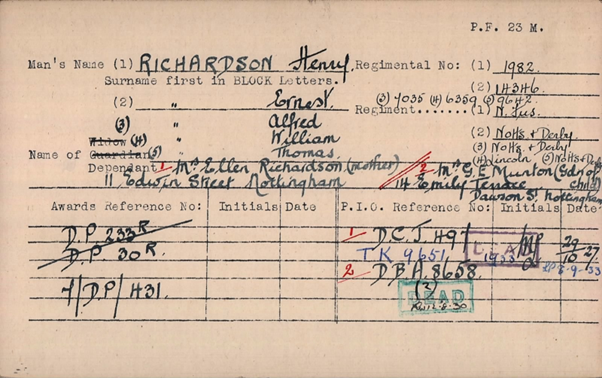
The pension ledger for Harry records that this child was illegitimate, and confirms that Mrs G E Munton was the guardian, and living at 35 Pipe Street, Southwell Road. By contrast his soldiers’ effects record notes that his mother was the sole legatee.
Grace Ellen Munton was born in Nottingham in 1890, and at the time of the 1911 census was an electric plater, living with her parents at 57 Bombay Street, Nottingham. Although recorded as Mrs Grace Richardson in the Red Cross records, she married Ernest Marshall in 1934, in Nottingham, under her maiden name.
The 1939 Register entry shows Grace E Marshall living with Ernest at 14 Emily Terrace, along with Charles H Richardson, a general labourer whose date of birth was 4 February 1914, and evidently Henry’s illegitimate son.
Ernest Richardson – 29 December 1917
Ernest’s service record hasn’t survived, but his medal index card and medal roll show he served as pte. 14346, 10 Battalion Sherwood Foresters. Ernest was probably not a regular soldier, the tenth service battalion being raised in Derby in September 1914, and landing at Boulogne on 14 July 1915, the date shown on Ernest’s medal records as his entry to France. The battalion was initially sent to Hooge, in the Ypres Salient at the end of July, and Ernest would almost certainly have served with the battalion on the Somme in 1916.
Ernest died of wounds on 29 December 1917, and is buried at Rocquigny-Equancourt Road British Cemetery, Manacourt. This cemetery was used in 1917 by two casualty clearing stations based at Ytres.
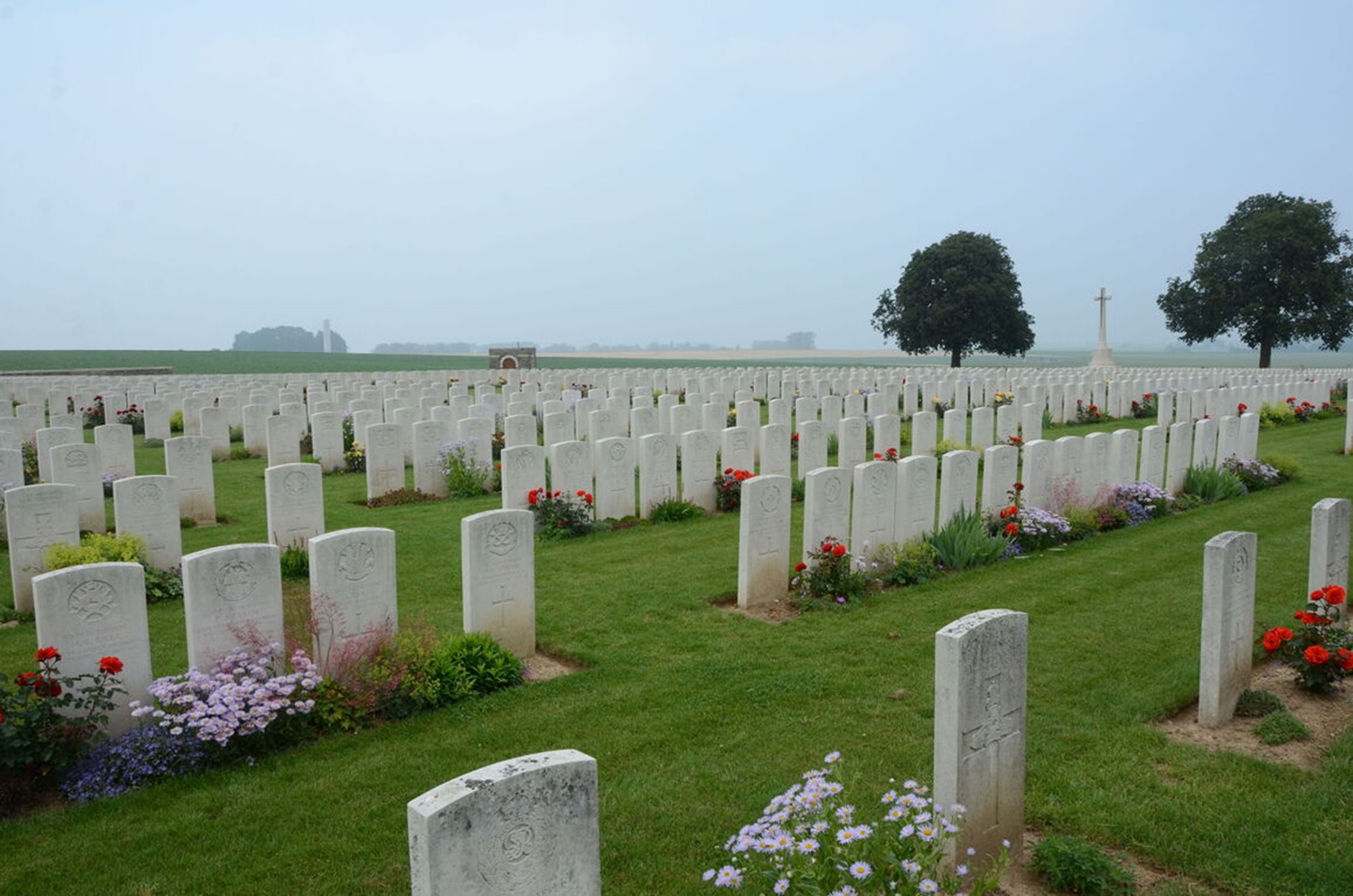
The battalion had detrained from Bapaume in mid December of 1917, and on 20 December were occupying the old British line at Butlers Cross, Havrincourt, before taking over the front line at Demicourt the following day and subsequently being relieved on 25/6 December. Since Ytres, with its casualty clearing stations, lies just behind the lines in this area, it seems very likely that Ernest received his injuries during this spell of duty and did not survive to reach a base hospital.
The marriage and births registration indexes show that Ernest had married Ada Martin in the third quarter of 1911 in Nottingham, and that they went on to have three children, their dates of birth given on the pension card shown below.
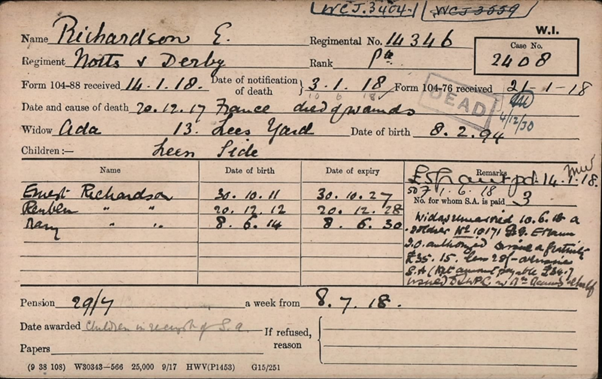
Ernest’s entry in the Soldiers’ Effects register show his dependents as his widow Ada and children, with an amendment to show her change of name to Ada Mann
Summary
It hasn’t been possible to determine whether James and Reuben fought in the war. For example, there were at least three cases of a James Richardson serving in the Sherwood Foresters, including Pte. 7741 from Nottingham, who was eliminated using a combination of his service record and his father’s identity, determined from his marriage record; Pte. 29214, whose service record revealed he was from Stoke on Trent; leaving Pte. 83302 as a possibility.
Once more the value of the pension cards and ledgers has been amply demonstrated.
Article contributed by Dr. Alan Hawkins





